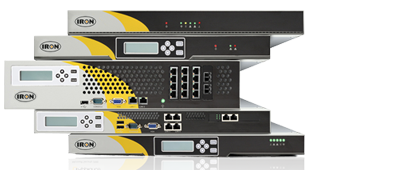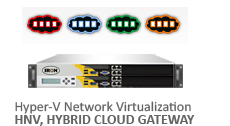- Data Center
- Cloud
- Storage
- Big Data
- Security
- Partners
- Support
- Company
FAQs - Email Archiving
Download PDF (50 kb)Frequently Asked Questions
- What is Email archiving?
- Why Email Archiving?
- What is eDiscovery?
- What are the reasons to implement an email archiving solution?
- What is the difference between Backup and Archiving?
- What is Journaling?
- What is Stubbing?
- How does SonaSafe for Email Archiving work?
- How does SonaSafe handle PSTs?
- Does SonaSafe support Single Instance Store (SIS) capability?
- What are the key capabilities of SonaSafe for Email Archiving?
- Can the application work with multiple Exchange servers?
TopQuestion: What is Email archiving?
E-mail archiving is a systematic approach to saving and protecting the data contained in email messages so it can be accessed quickly at a later date.
TopQuestion: Why Email Archiving?
Email has been growing at the rate of 40% every year and managing emails has become very complex. Microsoft Exchange Server is not only being used as an email server, it is also being used as document repository and management system. Businesses are being increasingly asked to retrieve emails during litigation. Also Companies need to comply with regulatory compliance requirements like Sarbanes-Oxley and HIPAA. According to Sarbanes-Oxley, public companies must keep all documents and communications for seven years following an audit. The penalties for destroying or altering a document can include fines up to $5 million and imprisonment for up to 20 years. Hence, Email is becoming Achilles Heel of document and records management.
Companies are scrambling to implement archiving solutions to avoid litigation and also to manage the growth of their Exchange servers. A good email archiving system should ensure that companies have ready access to email record, whenever it is required. Also, the application should be able to manage exponential increase in the size of Exchange servers.
TopQuestion: What is eDiscovery?
Electronic Discovery or eDiscovery refers to any process in which electronic data is sought, located, secured, and searched with the intent of using it as evidence in a civil or criminal legal case. eDiscovery can be carried out offline on a particular computer or it can be done in a network. Court-ordered or government sanctioned hacking for the purpose of obtaining critical evidence is also a type of e-discovery.
TopQuestion: What are the reasons to implement an email archiving solution?
The three key reasons for implementing an email archiving solution are: a. Regulatory Compliance, b. eDiscovery Requirements c. Email Storage Management.
- Regulatory Compliance: Many organizations are mandated to keep the emails for a certain period time and may be asked to provide email related information during a litigation. Companies should deploy a solution that not only provides efficient archival of email but also provides robust search mechanism. This enables quick retrieval of information to meet litigation and compliance requirements. Also, the application can be configured to retain all email messages, both sent and received for the requisite time period thus enabling to meet regulatory and legal retention requirements.
- eDiscovery Requirements:Electronic Discovery or eDiscovery is the process in which electronic data is sought, located, secured, and searched with the intent of using it as evidence in a civil or criminal legal case. Every organization, big or small, private or public is impacted by litigation during their lifetime. Organizations faced with litigation are often asked to produce emails and related information that were sent and received both within and outside the organization. Typically, organizations issued with subpoena scramble to get the records and it takes days if not weeks to collect all the information. It costs millions of dollars in many litigations and the ability to produce email information can result in tremendous savings.
- Email Storage Management:Email is growing at a rapid pace and Exchange server is being used as a document management in addition to being used as a communication tool. The growth in the size of the Exchange store adds tremendous complexity to the storage management of Exchange server. Without proper storage management, Exchange server will be difficult to manage and a single major crash can have tremendous impact on the productivity and the financial viability of an organization.
TopQuestion: What is the difference between Backup and Archiving?
Backup and archive are often difficult to distinguish. Most IT organizations have either treated them as separate activities (each with their own requirements and solutions), or they have used tape backup as a cheap (but not always appropriate) solution for both.
Backup is a temporary record that is ultimately overwritten, while archived information is a permanent record that is moved – not copied – from one system to another and retained for a specified period of time. Backup is an ongoing process and archive is a policy- or event-driven process. Backup is performed to be able to restore data and archive is performed in order to retrieve data.
TopQuestion: What is Journaling?
Journaling is the ability to record all communications in an organization. Email communications are one of many different communication mechanisms that you may be required to journal. Therefore, journaling in Exchange has been developed to enable the messaging administrator to feed messaging data into a larger journaling solution, while using minimum overhead.
It is important to understand the difference between journaling and archiving. Journaling is the ability to record all communications; alternatively, archiving refers to reducing the strain of storing data by backing it up, removing it from its native environment, and storing it elsewhere. Typically, Exchange journaling is used as a tool in your email retention or archival strategy.
TopQuestion: What is Stubbing?
Stubbing is an archiving mechanism that strips an email of its attachments, replaces it with a stub file or link within the message, and then stores the actual attachment in an archive.
TopQuestion: How does SonaSafe for Email Archiving work?
Sonasoft’s SonaSafe solution for email archiving is designed to meet regulatory compliance and eDiscovery needs of organizations. SonaSafe will capture all incoming, outgoing and internal emails and store them in archive databases as a Single Instance Store (SIS). Also, by use of "stubbing", message contents including attachments will be saved in the archive database and leaves behind an empty shell of the message, namely “stub” in the body of the email. This approach will reduce the size of the Exchange server by up to 90%. SonaSafe Email Archiving solution supports Exchange Server 2000, 2003 and 2007.
TopQuestion: How does SonaSafe handle PSTs?
Many organizations use PSTs as email archives and this becomes unmanageable. The solution gives the ability to migrate all existing PST file data into the SonaSafe archive database. This will enable organizations to eliminate PST files proliferation across the enterprise thus resulting in better email management. Also, this will result in reduced storage requirement and improved storage security.
TopQuestion: Does SonaSafe support Single Instance Store (SIS) capability?
Yes. All incoming, outgoing and internal emails will be captured and stored in archive databases as a Single Instance Store (SIS). Every email and attachment will be archived only once. Hence, SIS will reduce the amount of physical disk space required by eliminating duplication.
TopQuestion: What are the key capabilities of SonaSafe for Email Archiving?
- Ability to capture all email messages including incoming, outgoing and internal emails
- Find and retrieve email related information within seconds through sophisticated search technology
- Produce reliable information for legal discovery and investigations very quickly
- Reduce the amount of physical disk space required through Single Instance Store (SIS) capability
- Meet compliance requirements like Sarbanes-Oxley, HIPAA and many others
- Manage email life cycle from composition to deletion through proper policies
- Support multiple domains within an Exchange environment
- Reduce email storage and management costs
- Formulate and enforce corporate email and security policies
- Ability for end users to search and retrieve their own emails
- Ability to manage PST files effectively
- Reliable data protection through tamper-proof mechanism and encryption
- Excellent reporting functionality with detailed drill down reports
TopQuestion: Can the application work with multiple Exchange servers?
Absolutely. There is no limit on the number of servers that can be archived. One option is that all servers can be archived to a central archive server. The second option is to archive each Exchange server to a separate archive server, but have the ability to search across multiple archive servers. The second option is recommended if the Exchange servers are scattered across multiple geographic locations.

Copyright © 2025 Iron Networks, Inc. All Rights Reserved.








